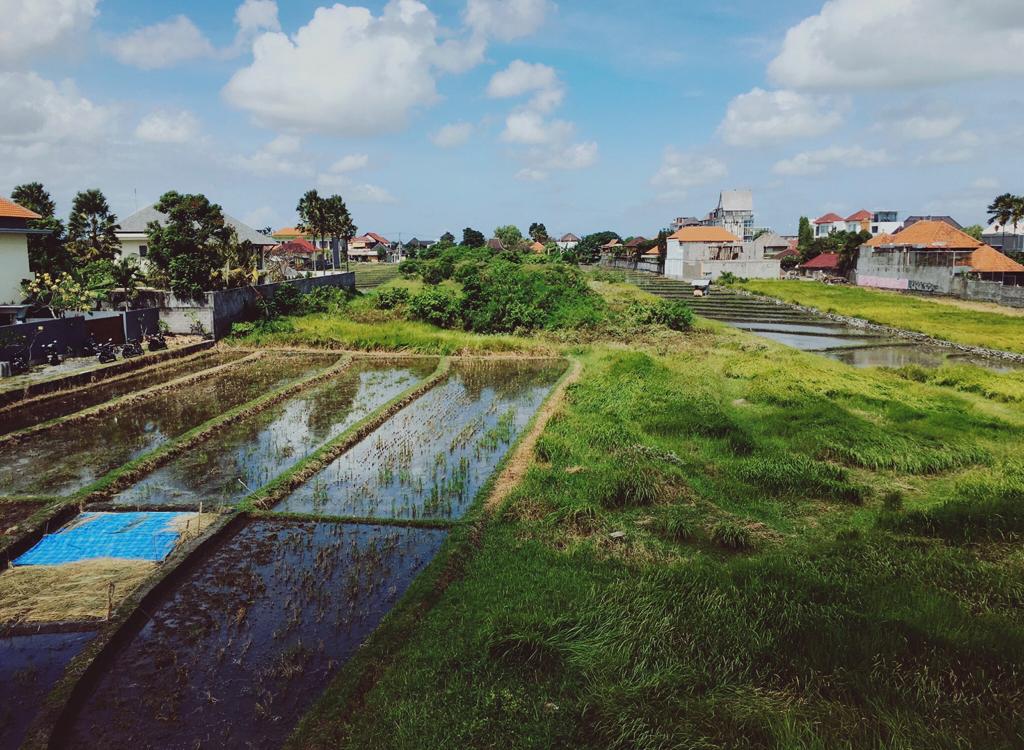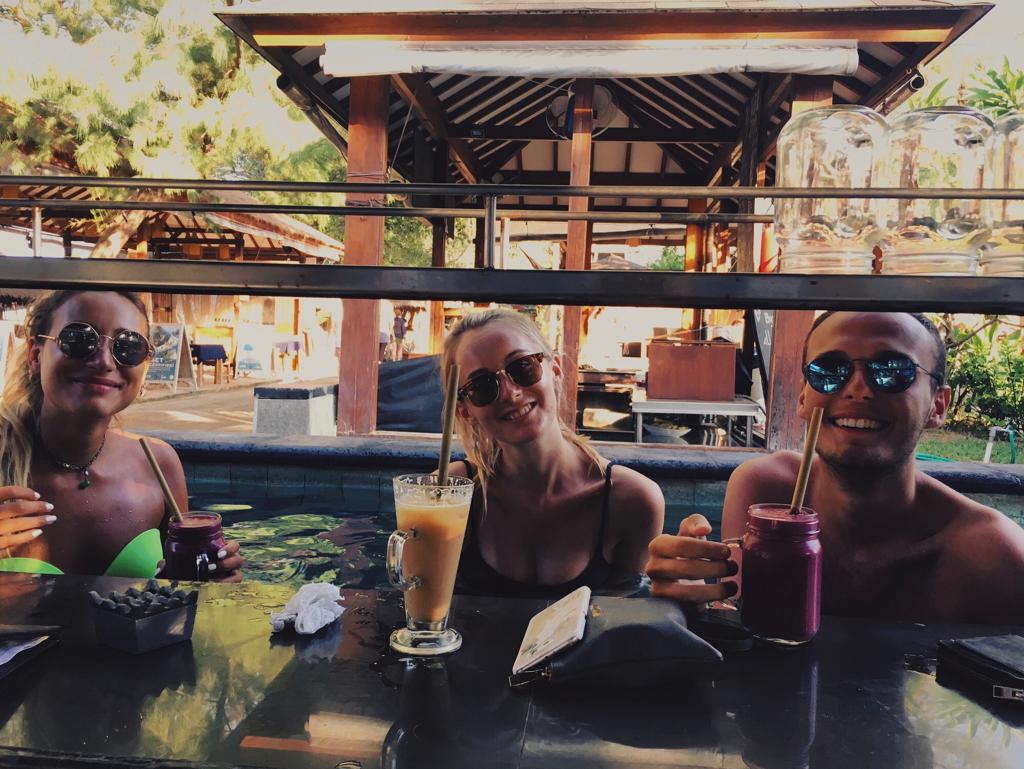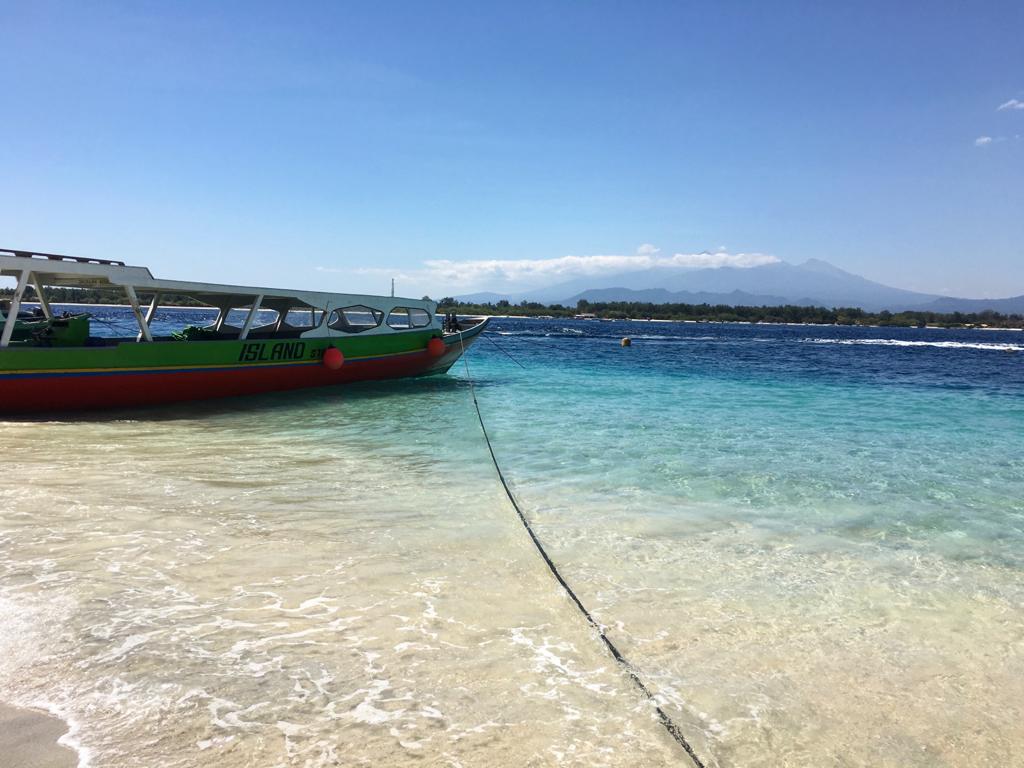That summer: Learning to love life again in Bali in 2016
‘The island’s sense of freedom, hope and enchantment enabled me to see what life without anorexia could be,’ says Sam Hancock of his summer of self-discovery in Indonesia


Your support helps us to tell the story
From reproductive rights to climate change to Big Tech, The Independent is on the ground when the story is developing. Whether it's investigating the financials of Elon Musk's pro-Trump PAC or producing our latest documentary, 'The A Word', which shines a light on the American women fighting for reproductive rights, we know how important it is to parse out the facts from the messaging.
At such a critical moment in US history, we need reporters on the ground. Your donation allows us to keep sending journalists to speak to both sides of the story.
The Independent is trusted by Americans across the entire political spectrum. And unlike many other quality news outlets, we choose not to lock Americans out of our reporting and analysis with paywalls. We believe quality journalism should be available to everyone, paid for by those who can afford it.
Your support makes all the difference.I never thought I’d be indebted to a plate of fried rice, but that’s what I find myself thinking about whenever someone asks what or who the turning point was in my four-year fight with anorexia.
It was a nasi goreng to be precise, which literally translates as “fried rice” in both Indonesian and Malay, and which I ate while backpacking around Bali to celebrate finishing university. There are many things I could say about that seemingly average meal of greasy rice, diced vegetables and a questionable fried egg. The most significant, though, is that it was the first time in 912 days that I’d eaten a carbohydrate (without being drunk or making myself violently sick afterwards).
When I look back at that solo dinner, I can’t be sure what drove me to actually eat it: what made me pick that particular dish, in that particular battered beach café, on a bustling back alley of Seminyak – one of the island’s biggest, and most beautiful, tourist hotspots.
All I know is that it was the first time in a very long time that I’d been able to sit, eat and think about what life after my eating disorder might look like. It helped that the food was actually pretty good, and that I was surrounded by one of the world’s most photogenic backdrops.
I was diagnosed with anorexia and bulimia, as well as depression, when I was 19 years old. Two relatives of mine, one of whom I was extremely close to, both unexpectedly died in quick succession. Almost immediately, various doctors and therapists all agreed that I’d tried to take back the feeling of control in my life by implementing a new, dysfunctional routine: disordered eating.
According to healthline, “anorexia often stems from a distorted body image, which may result from emotional trauma, depression or anxiety. Some people may view extreme dieting or weight loss as a way to regain control in their lives.”
By the time that two friends I’d gone to university with suggested we head to Bali after graduation, I was an anorexic pro. Although I was receiving treatment from various doctors and had supposedly been “on the mend” for months, I was still relying heavily on various unhealthy habits to get me through the day – not eating very much and purging whatever I did being an integral part.
When I decided to head out to the Indonesian island four days before my friends for a spot of solo travelling, my parents were suspicious, scared even. I think they knew why I wanted to be alone – that I was really just trying to escape them and their desperation for me to be “me” again. I felt bad, but I needed some space.
I’ll never forget the thrill of booking that plane ticket, of staring endlessly at maps and images of Kuta (the nearest base to the airport), Canggu (surfer’s paradise where international wave-riding competitions are held), Seminyak, Ubud (undoubtedly my favourite part of Bali: where else can you do sunrise yoga in a monkey sanctuary?) and Gili T (essentially the Magaluf of Indonesia).
I started to feel more comfortable in my surroundings, and in my own skin
This felt like more than a holiday from the beginning – it was a chance to try and prove to my family, my friends and even myself that, despite popular opinion, I could look after myself. Or should at least have the opportunity to try.
The best way to describe Bali is a kind of beautiful chaos. From the moment you step off the plane into its small, yet surprisingly pleasant, airport, you get the feeling there’s not quite enough room for everyone already there – let alone the plane full of excited people who have just arrived.
If you fly from the UK, chances are your layover will be in Indonesia’s capital, Jakarta, meaning arrival into Bali tends to be a bit of a sleepy haze. It’s why most people, especially backpackers, spend their first night in Kuta – the closest area to the airport with hotels and hostels. From experience I can safely say it isn’t worth staying in Kuta for more than that first night to recharge your batteries.

This wasn’t always the case though. As with many parts of Bali, tourism has been both a good and bad thing – while the island relies on it, particularly in high season, travellers have also been blamed for the destruction of some of its most idyllic settings. I was shocked at how much Kuta had changed. When I was six years old, my family moved from Liverpool to Singapore for my dad’s job – meaning holidays to Bali (which is only a two and a half hour plane journey away) were a regular occurrence. Back in 2002, the beaches of Kuta were something to marvel at. Now, ravaged by jetsetters, the sand looks and feels dirty, as though it’s seen better days.
One thing the area does still boast, however, is great food for cheap prices. The long, winding roads that lead up to Kuta’s beach, in particular, have a choice of authentic Balinese restaurants and cafes serving dishes such as chicken satay and mi goreng (noodles with vegetables and egg) for as little as £3.

Safe to say, a low price point was not enough to make me actually eat anything – not yet. During my first two days, I swerved all food and survived on regular bottles of water to keep myself hydrated. I was still extremely self-conscious of my body at this point; even using my hostel’s small communal pool made me feel physically sick. The idea of exposing my body, which by this point felt so damaged and starved – punished, even – to a bunch of carefree twenty-somethings scared the shit out of me.
But, by the time I moved on to Seminyak three days after arriving in Bali, I was getting into a very slow-moving process of self-acceptance. I started to feel more comfortable in my surroundings, and in my own skin. One night, as I sat at one of the area’s much-Instagrammed beanbag and multicoloured umbrella-adorned beach bars, I started thinking about why I had wanted to come here in the first place. What I wanted to prove to everyone, including myself.

It was that night, on my way back to the hostel I was staying at, that I stopped at a roadside café, ordered a nasi goreng and ate every last bite. Even the egg – and I hate eggs. It felt like the right thing to do; I wanted to have a good holiday with my friends and not revert to the person I’d been for the past two and a half years. I kept thinking about how lucky I was to be in such a beautiful part of the world – and I didn’t want anything to ruin it. I think what I finally realised was that, when I said “anything”, I was talking about myself.
After Seminyak, the next three weeks clicked seamlessly into place. My friends arrived and we booked a trip to Gili T (real name: Gili Trawangan, aka Party Island), and then onto Ubud. We followed it up with a visit to Canggu before heading back to Ubud for a second time, just because we loved it so much.
Every part of the sun-drenched island gives you the opportunity to explore a new aspect of Balinese culture; every part feels completely different to the last.
Aside from a near-death experience on our speedboat to Party Island, our holiday unfolded without a glitch. That’s one of the most charming things about Bali – while it can be utter chaos and you feel that things could go wrong at any moment, it all works out in the end.
Over Bintangs (an Indonesian beer) at a beach bar in Canggu, the man who served us told us there’s a traditional Balinese saying that translates as: “Everything will be OK in the end.” It seemed fitting for our trip, and for the changes I was actively making as a result of being on the island.
By the time I left Bali, almost four weeks after arriving, I felt like a different person in many ways. Neither the island, nor indeed a plate of traditional Indonesian fried rice, cured my anorexia – if only it were that simple. But the island’s sense of freedom, hope and enchantment enabled me to see what life without anorexia could be. What I could be. Over that simple plate of nasi goreng, I fell in love with life again – and, to some extent, food too.
This has been published as part of The Independent’s That Summer series of personal essays cataloguing the intense, daunting and joy-filled holidays that changed our lives for the better.
Join our commenting forum
Join thought-provoking conversations, follow other Independent readers and see their replies
Comments